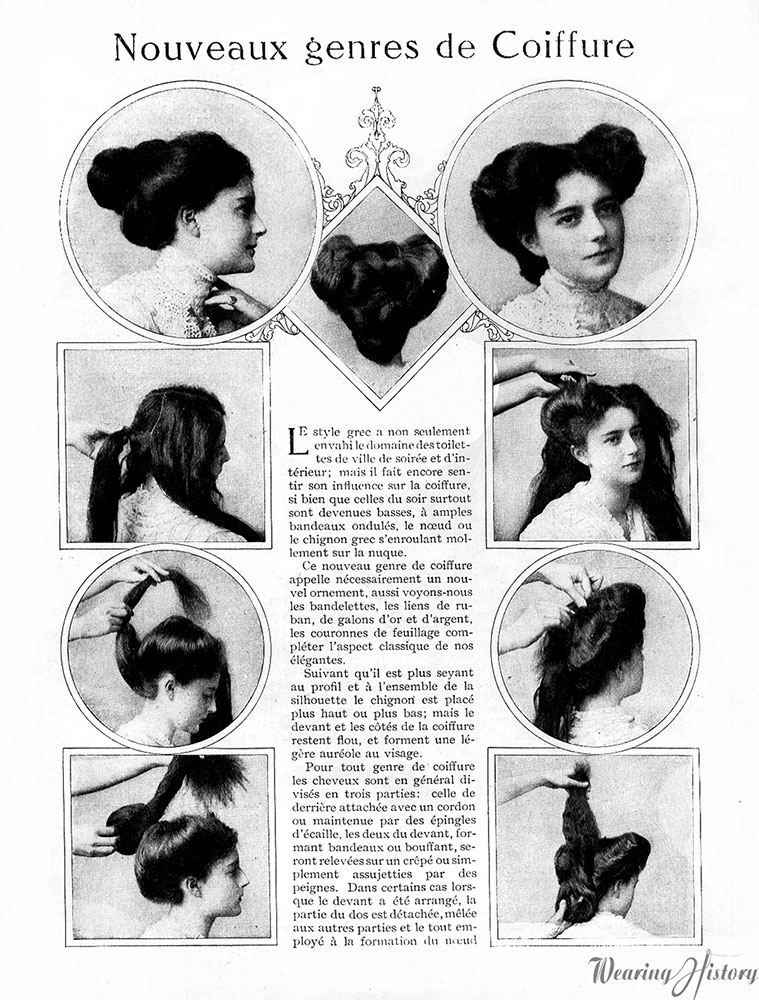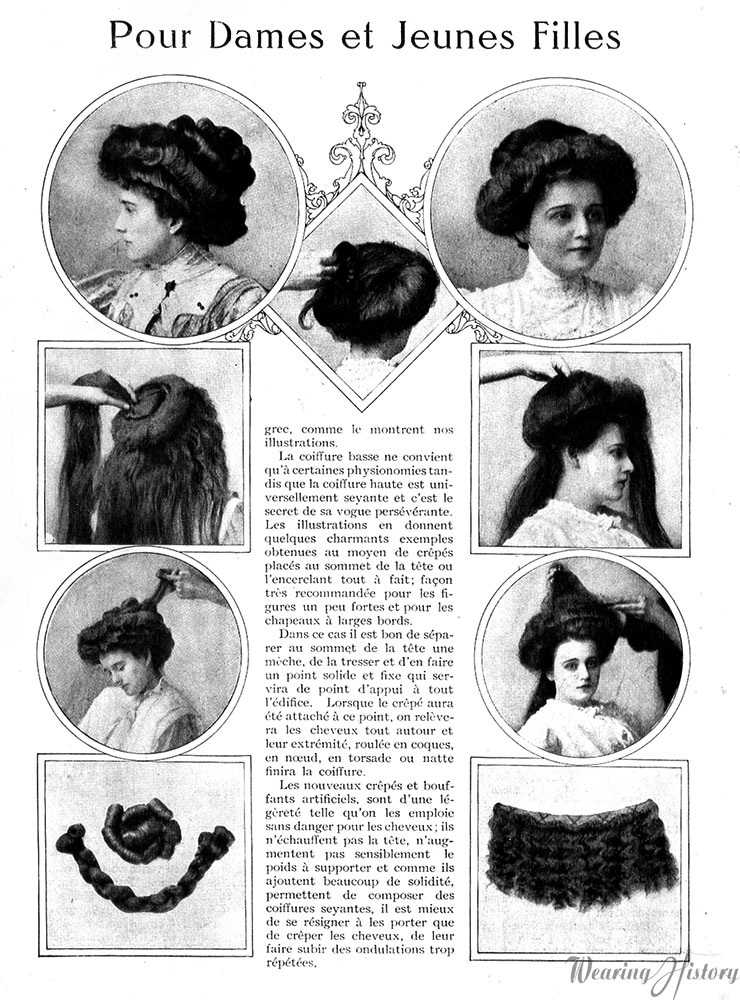Hello!
Today I have a few lovely images from 1908 from a great bound French fashion magazine I came across last year called Mirror Des Modes. Although I am far from fluent in French so cannot translate for you, I think these photos themselves are inspiration for the “How-To” of the Gibson Girl look! And fear not! Looks like these ladies used switches of hair and hairpieces to achieve the look, just like we would do today (though they were real human hair, most likely, or another natural substitute- not the plastic like we have today. Note to self: research false hair.)
If you have a go at any of these styles, please share your photos!


For more images from this magazine, click here to see previous posts.
xo- Lauren

Caroline
June 5, 2013 at 12:54 pm (11 years ago)I love these original tutorials! Have you ever found one for the early 1890s? I need to do hair for an 1891 ballgown but can’t find a good tutorial!
Lauren
June 6, 2013 at 1:01 pm (11 years ago)I will look and see! I do have some 1890s Ladies Home Journals :)
Cassidy
June 7, 2013 at 6:47 pm (11 years ago)Thank you so much for posting these! I love seeing how those hairstyles come together.
Mind if I post a translation of this tomorrow?
Lauren
June 8, 2013 at 11:49 am (11 years ago)Oh my goodness, I would LOVE that! Feel free to translate anytime! Thank you so much for the kind offer.
Sandy
June 11, 2013 at 4:33 pm (11 years ago)don’t “get” hair (I’ve had mine cut precisely twice in my life – not my idea either time – and usually wear it in a ponytail unless I’m “costuming”) so the hairdo page is . . . caveat lector.
New Styles of Hairdressing
The Greek [implied: ancient] style hasn’t only invaded the domain of city evening and at-home clothing; but is also making its influence felt in the hair-do, so that especially those for evening have become lower, with wide waved bands, the knot or Greek chignon rolls itself softly [or gently] on the nape of the neck.
This new type of hair-do calls [for] necessarily a new ornament, thus you see small headbands, rows of ribbon, gold or silver braid, the crowns [wreaths?] of foliage completing the classical aspect of our elegant ladies
Following that it’s very becoming to the profile and to the whole silhoutette the chignon is placed very high or very low; but the front and the sides of the hairdo stay soft [I think – my dictionary says vague/blurred/hazy], and form a light halo around the face.
For every type of hairdo the hair is in general divided into three parts: that of the back tied up with a cord or fastened with tortois shell pins, the two in front, forming bands or bouffant, are raised up over a [crêpé – crimper, rat, switch?] or simply fastened with pins. In certain cases when the front has been arranged, the back part is unpinned, mixed with the other parts and the whole employed in the formation of the Greek knot, as shown in our illustrations.
The low hair-do is appropriate only for certain facial types however the high coiffure is universally becoming and that’s the secret to its perseverance in fashion. The illustrations give several charming examples obtained by means of crêpés [hair-pieces?] placed at the top of the head or encircling all the way around it: fashion very recommended for figures [that are] a little bit strong and for hats with wide brims.
In this case its well to separate a lock of hair from the top of the head, to braid it and to make of it a solid, fixed point which will serve as foundation-point for the whole edifice. When the crêpé is attached at the point, one raises the hair all around and the ends, rolled in egg-shape, in knot, in twist/coil or in braid will finish off the coiffure.
The new artificial crimps and bouffants, are of a softness that one can employ without danger to the hair; they don’t warm-up the head, nor increase discernibly the weight to be carried and as they add a lot of solidity (stability?) they permit one to compose becoming coiffures, it’s better to resign oneself to carrying one than to crimp the [one’s own] hair, to make it submit to too-[often]repeated wavings.